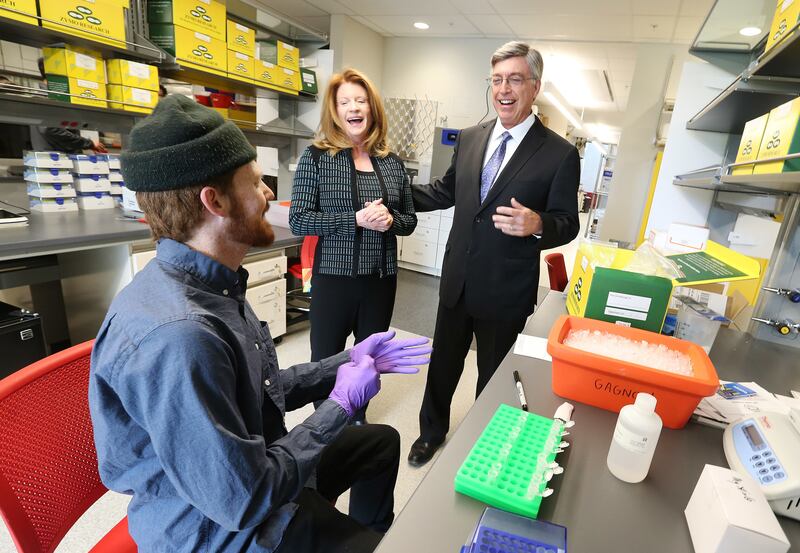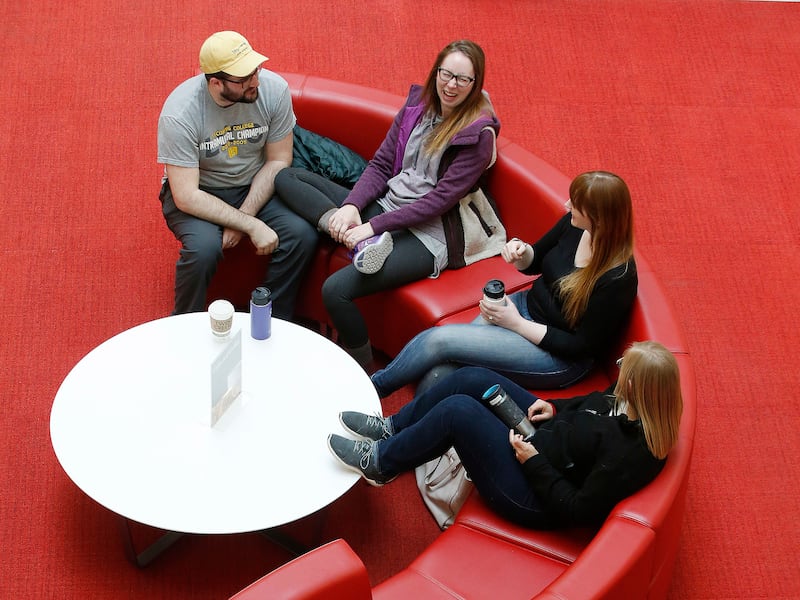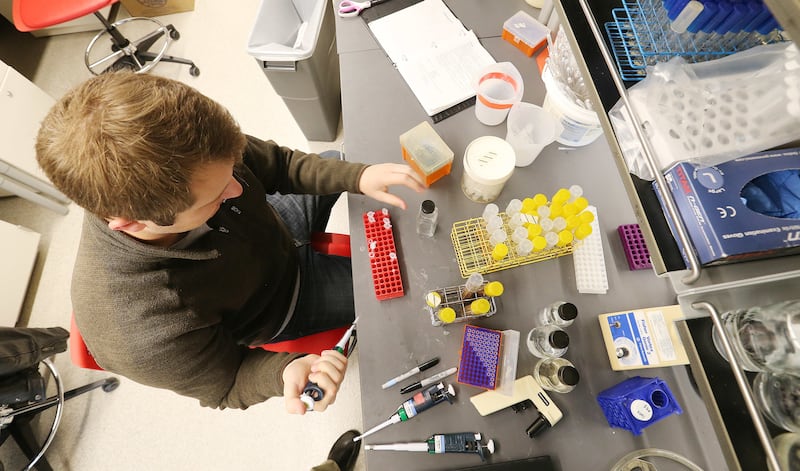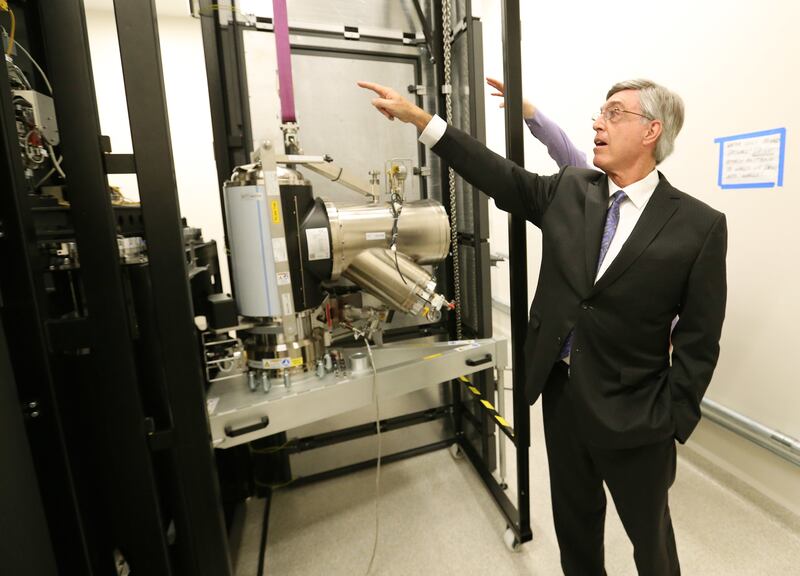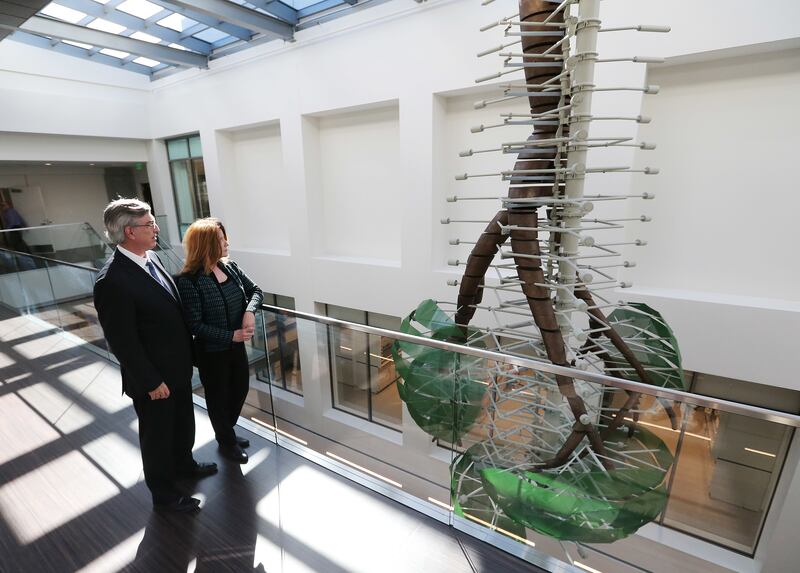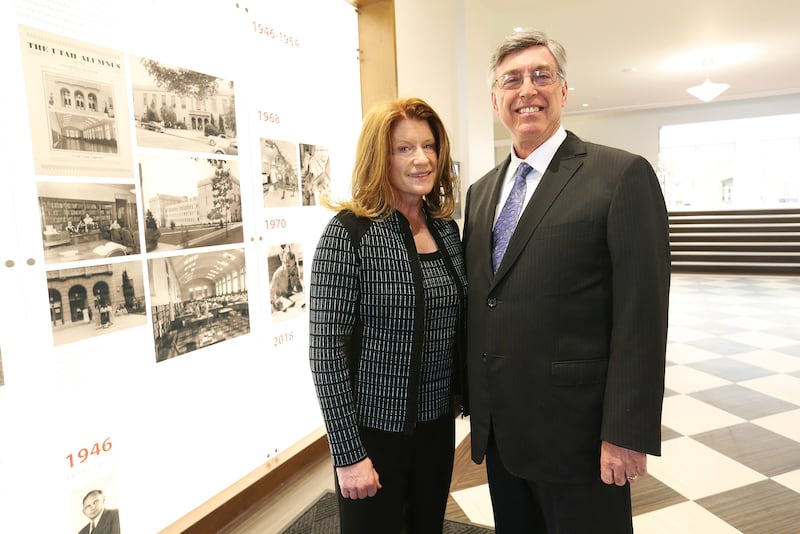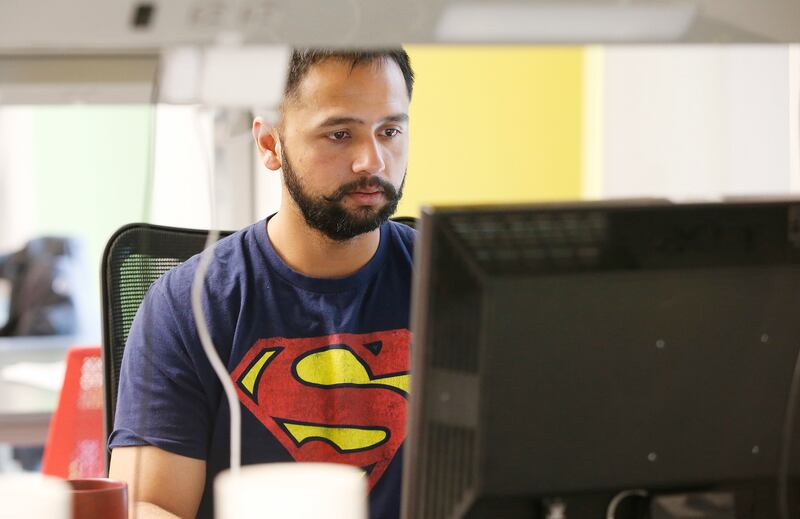SALT LAKE CITY — Thanks in large part to a multimillion dollar seed gift from a titan of Utah biotech, an 80-year-old building on the University of Utah campus that once housed relics from our prehistoric past is now a launch pad for the science innovations of the future.
Gary and Ann Crocker committed $10 million some eight years ago to begin the process of revamping the circa-1935 George Thomas Building on Presidents Circle — the longtime home of the Utah Museum of Natural History — into a gleaming new collaborative science facility.
On Friday morning, the official ribbon cutting will be held for the $55 million Gary and Ann Crocker Science Center. The extensively renovated building features modern and flexible classroom space, laboratories, a unique biotech commercial incubator center and world-class equipment. It was designed to be a platform for advancement in science research, education and commerce across multiple disciplines at the school.
In addition to the Crockers' donation, $34 million in state funding and additional private donations helped get the project completed.
Research efforts at the center will draw from all four departments of the U.'s College of Science, which include biology, chemistry, mathematics, physics and astronomy. College of Science Dean Henry White said the new facility will have a positive, and elevating, impact on students, researchers and science entrepreneurs at the U.
"This modern science hub is ready to serve new generations of students, faculty and staff at the University of Utah," White said. "We are extremely grateful for Gary and Ann's pioneering support for this building to become a world-class science education and research center on campus."
World-class is a term that could also be applied to Crocker's long list of accomplishments in the world of biotech — going back even before that term was coined — to the '70s when he was a student at the Harvard Business School. As a married parent, Crocker needed to work as well as go to school, and he found a job as a sales rep for a medical supply company that sold blood pressure monitoring equipment.
What began is a simple economic necessity ended up being revelatory.
"I took a job as a medical device salesman, working part-time and out hitting 20 to 25 Boston-area hospitals," Crocker said. "I fell in love with the industry and the intersection of science, biology and medicine."
After completing his Master of Business Administration studies, Crocker went on to work for Baxter International, at that time and still today, one of the world's largest medical device and health care products companies. But the urge to innovate was powerful, and Crocker became his own boss in 1982 with the launch of Research Medical, a company specializing in cardiac catheters used for open-heart surgical procedures.
The devices were wildly successful, and while continuing to run Research Medical Crocker launched another business with his friend Dr. Dinesh Patel that pioneered new methods for transdermal hormone delivery. That company, Theratech, also found great success.
Both companies sold to global medical companies in the '90s, Research Medical for $250 million and Theratech for $340 million, and Crocker used his proceeds to launch Crocker Ventures, a company dedicated to providing seed-stage funding to life sciences ventures.
Crocker Ventures has backed numerous biotech endeavors, and Crocker is leads the boards for two of the biggest, Cottonwood Heights-based Nexus Spine, which specializes in advanced spinal implants, and Merrimack Pharmaceuticals, based in Cambridge, Massachusetts. Merrimack is a research lab focused on a precision-medicine approach to cancer treatments. The company, founded by researchers from Harvard and MIT in 2000, has already brought one major drug to market, which it sold for $530 million in 2009. Merrimack President and CEO Dr. Richard Peters said Crocker's enthusiasm for, and committment to, the fight against cancer was an inspiration.
"He's incredibly positive and passionate in a genuine fashion … it's deep in his DNA," Peters said. "He is also someone who is solution-oriented. He does not agonize over the problem, Gary very quickly pivots to potentials and solutions."
Peters also noted Crocker's record of achievements in the realm of life science research and business reflects a rare gift.
"Building a succesful business in this industry is incredibly difficult," Peters said. "Being able to do it multiple times is a reflection of Gary's acumen, intelligence and resilience."
Crocker also helped found BioUtah, a nonprofit life sciences industry association working to build innovation and advance the industry's ecosystem.
BioUtah President and CEO Kelly Slone said biotech is growing faster than any other business category in Utah, including the much vaunted high-tech sector, and said Crocker is a titan in the industry.
"Gary is truly one of Utah's life science pioneers," Slone said. "He's not only launched numerous very successful businesses, but has helped seed a lot of the companies that have contributed so much to building the rich environment in Utah for pharmaceuticals, medical devices, research and more."
Slone noted Crocker and his wife have also been about giving back to the community in ways that extend far beyond his business influence.
Crocker has served on the College of Science advisory board for nearly two decades, funded housing for science honors students with the Crocker Science House, launched and funded a scholarship program for science student internships, aimed at connecting students with jobs in the life science industry and, now, leveraged the completion of the Crocker Science Center with the anchor donation.
Slone said the launch of the center could not be more timely for the burgeoning industry in Utah.
"Some of our greatest needs in this arena are to grow private capital and talent development and recruitment," Slone said. "The Crocker Center is poised to make great contributions in both these areas."
Crocker himself sees, as one of the most signficant outcomes of the center, the positive impacts that will accompany the legion of life science students and researchers that will find opportunities for knowledge, discovery and the advancement of science in the new facility.
"You have to make STEM investment real or you really don't have an economic pathway forward," Crocker said. "Utah is now a player on the national stage because we've got the capacity to actually generate STEM educated students. Ten thousand students will be going through this building each year … and multiply that by the next century, perhaps, that the facility is in service."
"It is a humbling and exciting prospect."

